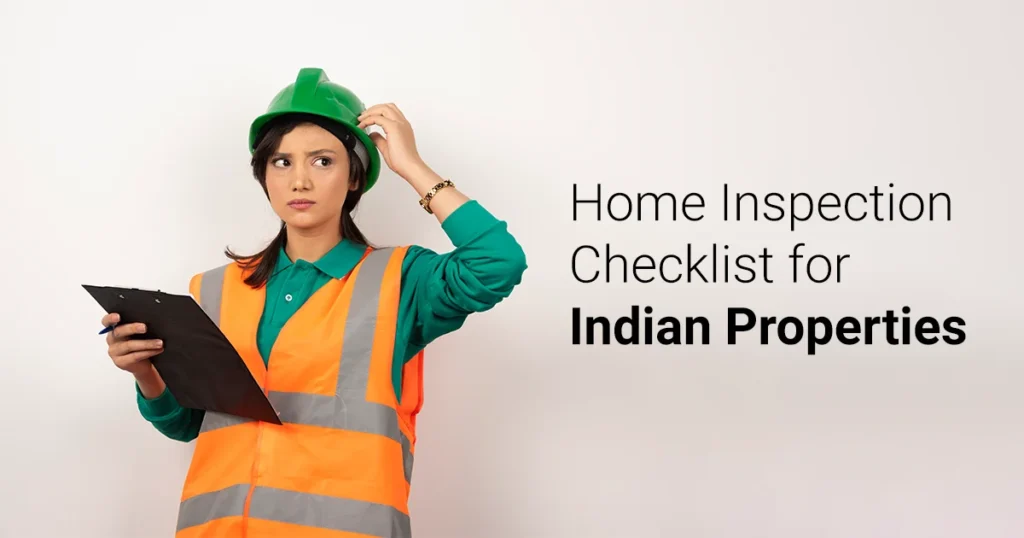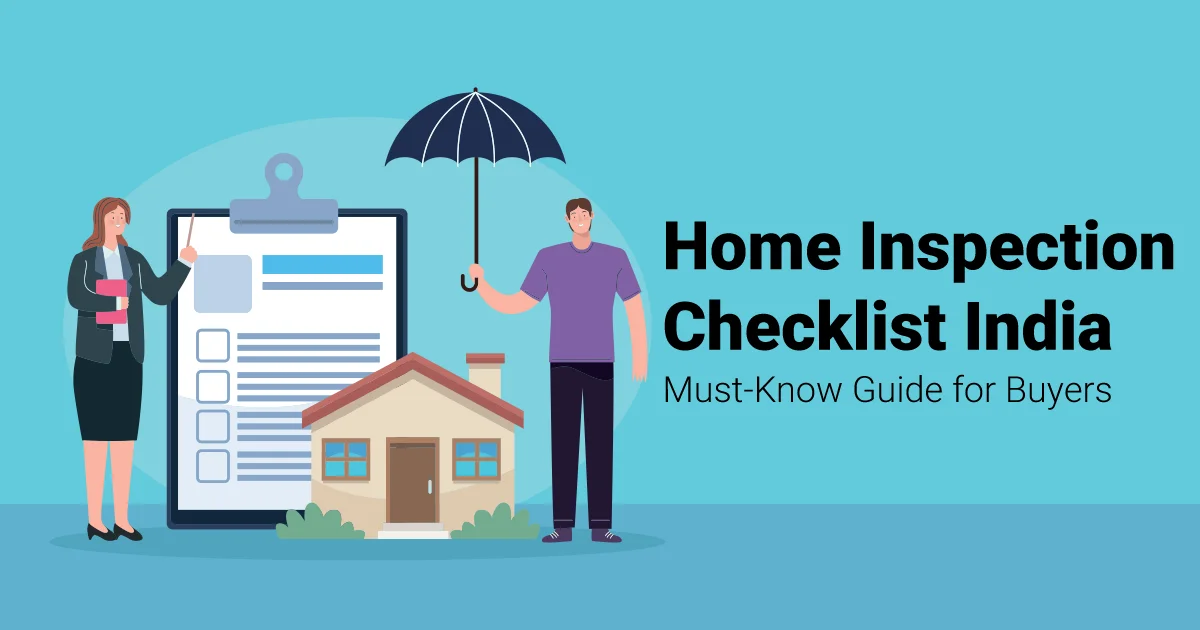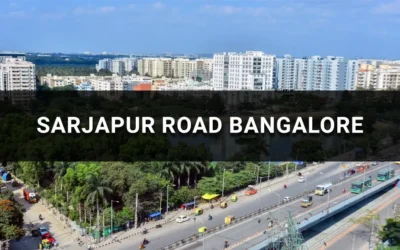Purchasing a property in India in 2025 is a significant financial milestone as well as an emotional one. However, a lot of homebuyers continue to mostly rely on superficial evaluations or verbal guarantees from builders and brokers.
One step guarantees that your future home is genuinely safe, sound, and worth every rupee in an era where openness and wise decision-making are the norm: a professional home inspection.
A home inspection checklist isn’t just a formality; whether you’re buying a new house or a resale unit, it’s your safeguard against unforeseen repairs and legal issues. So, as a result, we have addressed one important point in this blog: What should be on your home inspection checklist? Let’s break it down together.
What is a Home Inspection?
A house inspection is a methodical, comprehensive assessment of the physical state of a property, usually carried out by a trained home inspector. It includes evaluating roofing, electricity, plumbing, safety features, and structural integrity, among other things.
Even though the check is mostly non-invasive and visual, it is crucial for spotting current problems or possible problems down the road. Knowledgeable consumers are depending more and more on these reports to demand repairs, renegotiate prices, or even change their minds about making a purchase.
Read also: Pros and Cons of Buying a Flat in Bangalore
Why a Home Inspection Checklist Matters More in 2025
In 2025, the real estate market will be characterized by smart homes, sustainability requirements, and increased builder accountability as a result of RERA and other regional laws. Home inspections offer more than surface-level assurance in such a situation. They give purchasers information about the quality of the materials, adherence to recognized building codes, and the anticipated lifespan of projects. The buyer may eventually be exposed to hidden damages or legal issues if an examination is skipped.
Furthermore, inspections in 2025 will be more precise and data-driven than ever because of technological developments like digital moisture meters, drones for roof surveys, and thermal imaging.
So, now let’s move on to the checklist.
Home Inspection Checklist for Indian Properties in 2025

Here’s what should be added:
Structural Integrity
A house’s long-term durability and safety are determined by its foundation and framework. A thorough examination of the foundation, walls, beams, columns, and load-bearing components must be the first step in any house inspection. Inspectors search for water seepage, bulging walls, uneven flooring, and plaster or brickwork fractures that could jeopardize structural stability.
To identify any early indications of structural fatigue, expansion joints and slab problems are also carefully examined in high-rise buildings. Because structural problems frequently require costly and time-consuming repairs, these findings are crucial.
Read more: How to Get a Home Loan with Low CIBIL Score in India
Roofing System
A property’s roof serves as its first line of protection from the elements, and a weak or damaged roof can result in significant heat loss and water intrusion. The structural framework underneath, flashing around chimneys or skylights, waterproofing membranes, and tiles or metal sheets are all evaluated by inspectors.
Roofs in India’s diverse climate zones need to be resilient to high summer temperatures, monsoon rains, and, in certain places, seismic activity. Additionally, a roof inspection looks for signs of leaks or interior ceiling stains, sagging, and blocked drainage outlets.
Electrical System
In addition to being ineffective, an antiquated or badly built electrical system can pose a serious risk to public safety. To make sure the system is up to code, home inspectors examine the main electrical panel, fuse boxes, wiring architecture, and general load management.
Modern homes in 2025 frequently have extra features like smart home automation, EV charging ports, and solar panel connections; these additions need to be verified for safe integration. Any voltage irregularities, poor wiring, or incorrectly grounded systems are detected right away and fixed.
Plumbing and Water Supply
In many Indian homes, water damage is a subtle but expensive problem. Checking the water heater’s operation, drainage flow, pipe condition, and water pressure is all part of a comprehensive plumbing system examination. Inspectors check for leaks, such as mould growth or wet patches on walls, from hidden pipes.
The capacity and state of storage tanks and water pump systems may also be assessed by the inspector in areas that rely on tankers or borewells. In addition to ensuring a steady supply of water, an effective plumbing system prevents interior leaks from causing future structural deterioration.
Read also: IFMS Charges in Real Estate: What They Are & Why You’re Paying Them
Walls, Flooring, and Ceiling
These exposed surfaces show underlying problems in addition to a home’s aesthetic appeal. Uneven flooring, peeling paint, or plaster cracks may be signs of faulty construction, foundation movement, or water seepage. Staining or bulging ceilings could indicate pipeline damage or roof leaks.
The inspector also looks for uniformity in paint application, tile alignment, and finishing quality in newly built residences. Age-related wear and tear on resale houses must be separated from potentially dangerous flaws that require immediate repair.
Doors and Windows
Windows and doors are essential to a home’s insulation, ventilation, and security. An inspector assesses the materials’ durability, locking mechanisms, alignment, and convenience of use. Inadequate installation may result in water seepage during rainy seasons, pest entrance, or air leaks.
Glass panels are evaluated for safety glazing standards, particularly in balconies or French windows. By 2025, sensor-based access points and smart locks will also be widely used; their compatibility with home automation systems is being examined.
Read also: EOI in Real Estate: Smart First Step or Just a Formality?
Kitchen Inspection
The state of the kitchen has a direct impact on usability and hygiene because it is a high-traffic and functional room. The soundness of countertops and cabinets, ventilation through chimneys or exhausts, leaks beneath sinks, and the correct positioning of gas and electrical connections are all examined by inspectors.
Appliance locations, hardware, and fitting quality are evaluated in modular kitchens. A badly planned kitchen might result in ongoing maintenance problems and lower property values.
Bathrooms and Toilets
Water pressure, tile grouting, drainage slope, and fixture stability all need to be carefully examined in bathrooms. This area frequently experiences water leaks, which can harm nearby rooms or even lower levels in multi-story buildings.
Other factors assessed include non-slip floor tiles, working exhaust fans, and proper sealing around faucets. As the use of covert plumbing grows in 2025, moisture meters are frequently employed to find concealed leaks without causing surface damage.
Safety and Compliance
Lastly, a 2025 house inspection assesses regulatory compliance and safety equipment. This covers CCTV installations, smoke detectors, fire alarms, extinguishers, and intelligent security systems.
Additionally, inspectors confirm that the property conforms to building rules and designs that have been approved by RERA. The safety checklist also includes emergency access, stairwell lights, and fire exits for apartments or gated communities. Buyers are required to confirm that all occupancy certificates and approvals from local authorities are current and available.
Common Issues Found in Home Inspections
Even brand-new homes can have defects, and a thorough home inspection seeks to identify these issues. The following are some common problems that professionals face:
- Improper Waterproofing: One of the most prevalent—and costly—oversights, particularly in bathrooms and terraces, is improper waterproofing.
- Inadequate electrical wiring: Unsecured or non-compliant circuits that could catch fire.
- Hidden Dampness: Wetness behind walls that may cause mould growth or deterioration of the structure.
- Uneven Flooring: Uneven flooring can include unevenly levelled surfaces, groaning wood panels, or tiles that spring up.
- Faulty Drainage Systems: Slow or clogged drains that point to problems with plumbing design are signs of faulty drainage systems.
- Infestation of termites or other pests: Particularly in houses that have been vacant for some time.
Early detection can help you negotiate a better price before signing the contract or save lakhs on repairs.
Even though a home may appear flawless from the outside, its genuine worth is found within. By using this thorough home inspection checklist that buyers in India can rely on, you’re giving yourself power, information, and self-assurance.
Wait until all the boxes are checked before signing the sale agreement.




